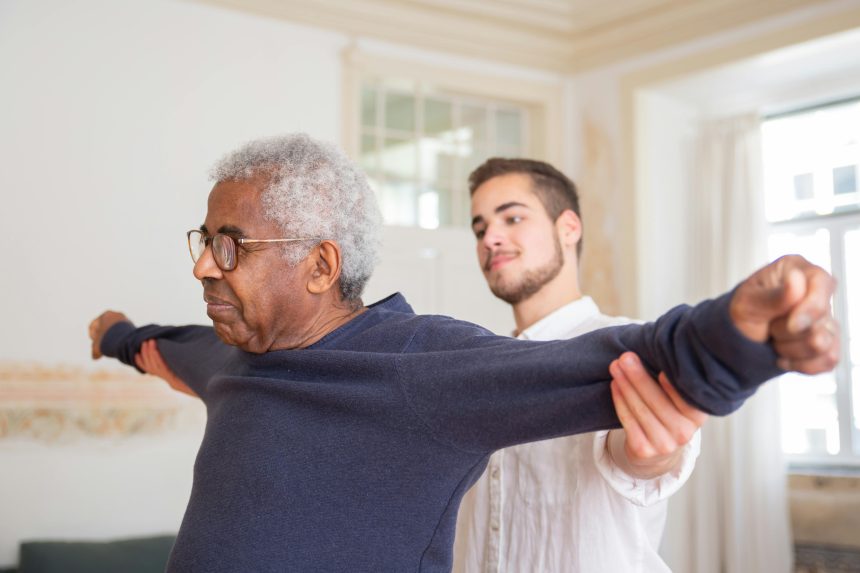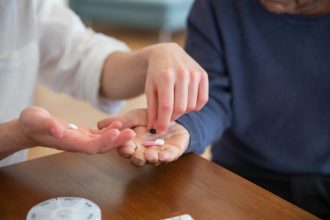One of the most important steps after a brain injury is learning how to move again. Many survivors face weakness, stiffness, or problems with balance that make everyday activities difficult. Some cannot walk without assistance, while others struggle with fatigue that limits how much they can do in a day. Physical therapy provides the structure and expertise needed to rebuild mobility, restore strength, and regain independence.
The purpose of physical therapy is not just to help survivors recover lost abilities. It also protects long-term health by preventing complications such as joint stiffness, contractures, or falls. Over time, it gives survivors the tools and confidence to safely participate in daily life.
The Role of Physical Therapy in Recovery
Physical therapy begins as soon as a patient is medically stable. In the hospital, therapists may help with gentle movements in bed, preventing muscles from weakening during long periods of rest. As progress is made, survivors gradually advance to sitting, standing, and eventually walking. Each step is guided by a therapist who evaluates movement patterns, corrects unsafe techniques, and adapts exercises to the survivor’s abilities.
As recovery continues, physical therapy becomes more intensive. It may involve retraining the body to perform familiar actions — walking across a room, climbing stairs, or getting into a chair — while also building endurance and coordination. Therapy sessions often look repetitive, but these structured routines are how the brain and body learn to work together again after injury.
Approaches and Techniques
The techniques used in physical therapy depend on the type and severity of the injury. Some survivors work on regaining walking ability through gait training, while others focus on improving balance to prevent falls. Strengthening exercises target weakened muscles, and endurance training helps combat the fatigue that is common after brain injury.
In recent years, new technologies have enhanced the therapy process. Treadmills with body-weight support allow patients to practice walking without risk of falling. Robotic exoskeletons provide guided movement for those who cannot walk independently, while electrical stimulation can activate muscles that no longer contract on their own. Virtual reality programs are also being introduced, creating engaging environments where patients practice movement through interactive tasks.
Not every survivor will have access to these advanced tools, but even the most basic exercises — performed consistently and under professional guidance — can lead to significant progress.
The Importance of Consistency
Physical therapy works best when it becomes part of daily life. While formal sessions in hospitals or clinics provide structured training, survivors often need to continue exercises at home. Therapists design personalized routines that families and caregivers can help reinforce, ensuring that progress made in the clinic carries over into daily activities.
Consistency is vital because recovery is rarely linear. Survivors may experience plateaus where improvements seem to stall. In these moments, regular practice and encouragement keep the body conditioned and ready for the next breakthrough.
The Caregiver’s Role
Family members and caregivers often play a direct role in physical therapy. They may assist with stretches, provide encouragement during exercises, or ensure that the home environment is safe for movement practice. Caregivers also help track progress and communicate with therapists, which can guide adjustments in the rehabilitation plan.
At the same time, caregiver involvement must balance support with safety. Learning the proper way to help with transfers, mobility, or exercise prevents injury to both the survivor and the caregiver. Rehabilitation centers often provide training so families feel confident in their role.
Challenges and Emotional Aspects
Physical therapy is not only physically demanding but also emotionally challenging. Survivors may become frustrated when progress feels slow or when they cannot perform tasks they once did with ease. Fatigue, pain, and discouragement are common obstacles. Therapists serve as both guides and motivators, helping survivors push past setbacks while respecting their limits.
Progress also varies widely between individuals. Some regain mobility quickly, while others need months or years of therapy to achieve independence. Even small milestones, such as walking without a cane for a short distance, represent significant victories worth celebrating.
Long-Term Outlook
The benefits of physical therapy extend far beyond the rehabilitation clinic. Survivors who engage in therapy often continue to improve for years, sometimes surprising themselves with how much function they regain. Even when full recovery is not possible, therapy helps maximize independence and quality of life by teaching safe strategies for movement and mobility.
Long-term therapy may also shift focus from recovery to maintenance. Survivors learn how to manage fatigue, prevent falls, and maintain strength through regular activity. This ongoing commitment ensures that progress is not lost and that survivors continue to live as independently as possible.
Conclusion
Physical therapy is one of the cornerstones of brain injury rehabilitation. It restores strength, balance, and movement while also providing survivors with the confidence to live safely and independently. From the first stretches in a hospital bed to advanced rehabilitation techniques using robotics or virtual reality, therapy is a process of rebuilding both body and spirit.
Recovery through physical therapy requires patience, persistence, and support, but the results can be life-changing. For many survivors, the ability to stand, walk, or move freely again is not only a physical achievement but also a powerful step toward reclaiming identity and independence after brain injury.







